Cuyama Buckhorn’s Buckhorn Bar, led by Scott Augat and Sam Seidenberg is Unlike any Roadside Cowboy Bar in the High Desert
Bar Lead Sam Seidenberg is doing something twofold at the Buckhorn Bar – he is encouraging and creating cultural exchanges unlike perhaps anywhere else in the state, and he is taking the idea of outdoors-to-glass to the next level.
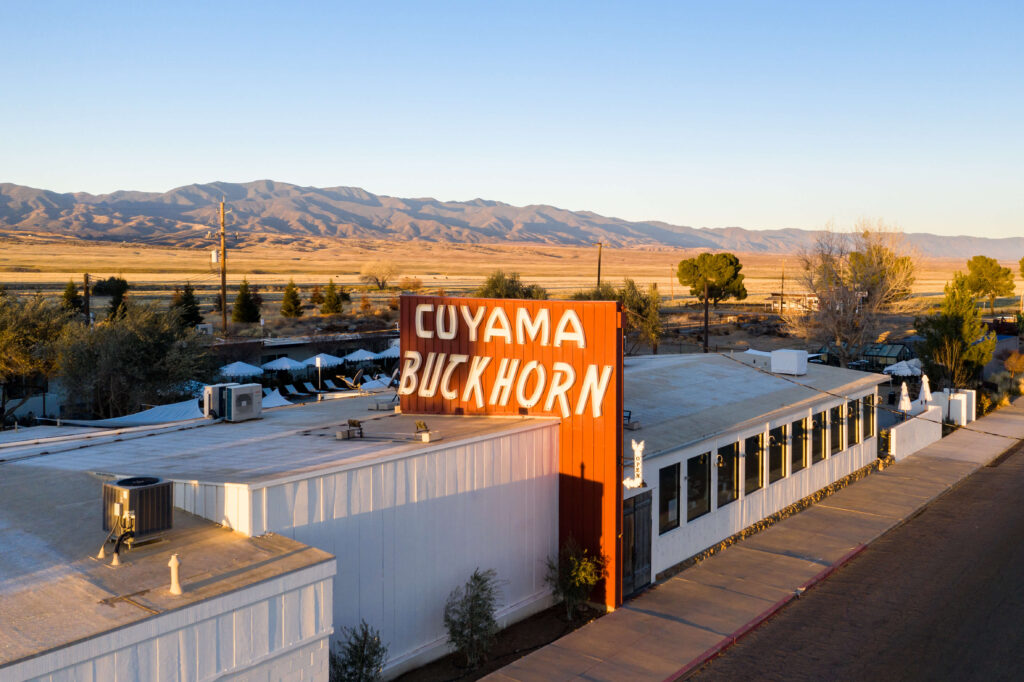
A high desert hideaway, Cuyama Buckhorn sits on Highway 166 between Santa Maria and Bakersfield, CA—an hour away from Santa Maria Airport, two hours from Santa Barbara Airport, two and a half hours from Los Angeles International Airport, two hours from Burbank Airport, and just over an hour from Bakersfield Municipal Airport.
The L88 airstrip, a privately-owned, public use airport is 2 blocks from the resort.
Nestled in what is referred to as The Hidden Valley of Enchantment—a fitting nickname for this hidden gem of a region—Cuyama Buckhorn neighbors small farms, ranches, wineries, and natural landmarks including Carrizo Plain National Monument, Los Padres National Forest, and Bitter Creek Wildlife Preserve. The area is a popular destination for motorcyclists and pilots.

Cuyama Buckhorn was originally a roadside motel built for oil executives to have a place to stay in the 1950s, and in the 70+ years since it opened, has since catered to everyone from local ranchers and cowboys to bikers and car buffs out for their Sunday drives.
Seidenberg brings a wealth of experience to the job, having worked in bars in San Francisco and Portland before discovering New Cuyama one day and realizing the town had everything he needed.
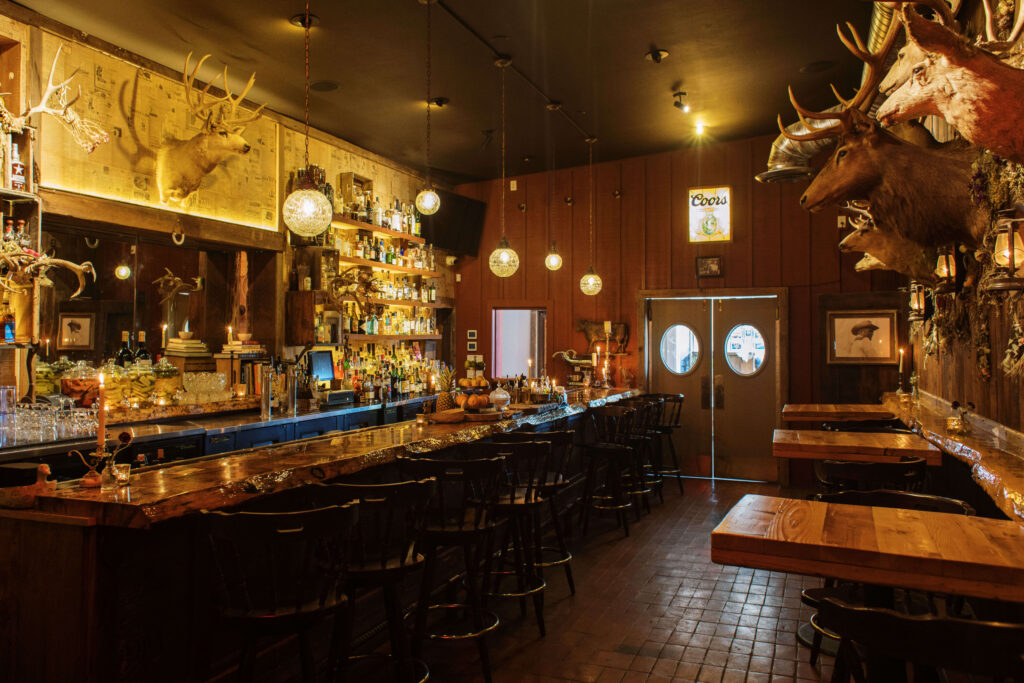
Today the bar’s motto “Come as you are” welcomes everyone from mountain bikers and outdoor enthusiasts to city folks looking to enjoy the resort for the weekend.
“This is essentially an American country bar and my goal is for us to meet the needs of everyone who walks through the door,”
says Seidenberg.
“We have a more diverse clientele here than I ever saw when I was working in the Mission District in San Francisco,” says Seidenberg of the scene.
What he has done with the cocktail program is create a way to tell stories through the drinks he’s created and thus encourage those drinking them to better understand where they are at that moment.
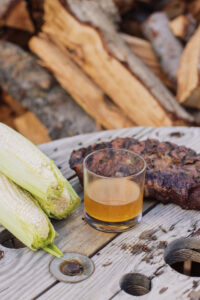
God’s Country, made with Rye, 3H Wagyu Beef, Coors Light and Corn
For example, his drink, God’s Country, made with Rye, 3H Wagyu Beef, Coors Light and Corn is basically an homage to the ranch traditions of the Valley itself.
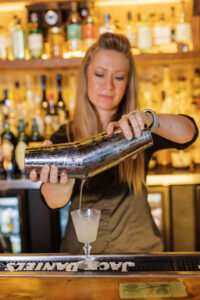
As with the layered stories behind each drink, Seidenberg, who has a deep personal passion for the area and the Los Padres National Forest in particular, focuses on layering ingredients from the region as well into each drink he develops.
Whether he be out for a mountain bike ride or a trek into the mountains, he’s always on the hunt for what he can bring back into the bar and ultimately the glass. While manzanita may be highly endangered elsewhere in the state, in the Cuyama Valley it grows abundantly and Seidenberg finds many ways to use it from harvesting berries to picking the flowers.
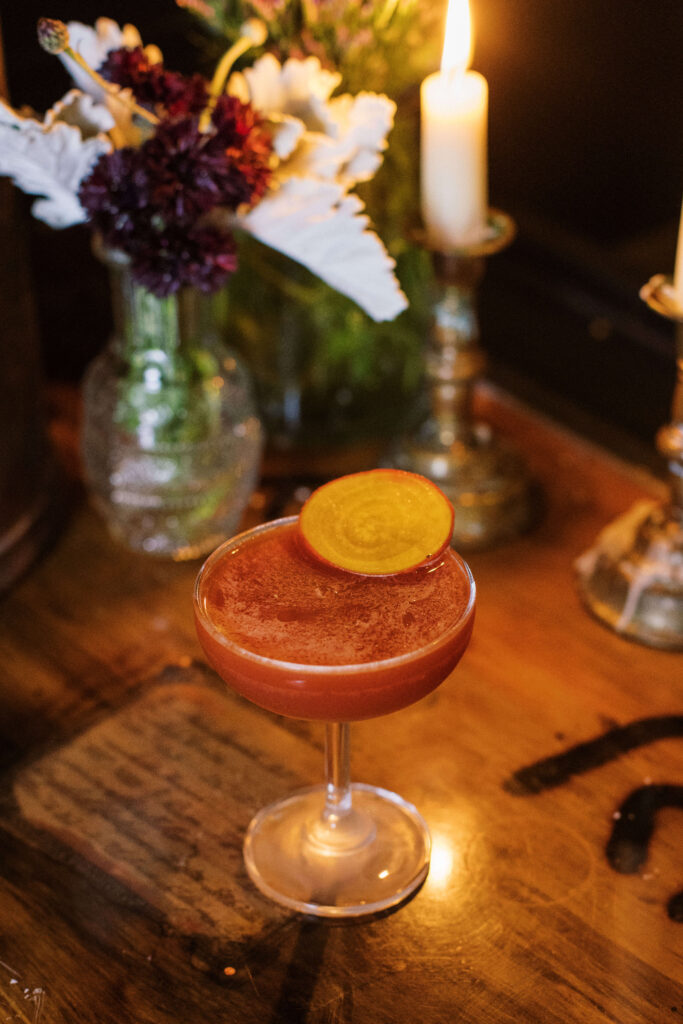
A drink such as the Prickly Pear, Manzanita Flower, Yerba Santa and Mezcal Spritzer is just one example of the fruits of his labor.
General Manager and Sommelier Scott Augat, who has spent his career at some of the best restaurants in Boston, Miami and Dallas, is also passionate about both creating conversation and inciting curiosity with bar patrons.
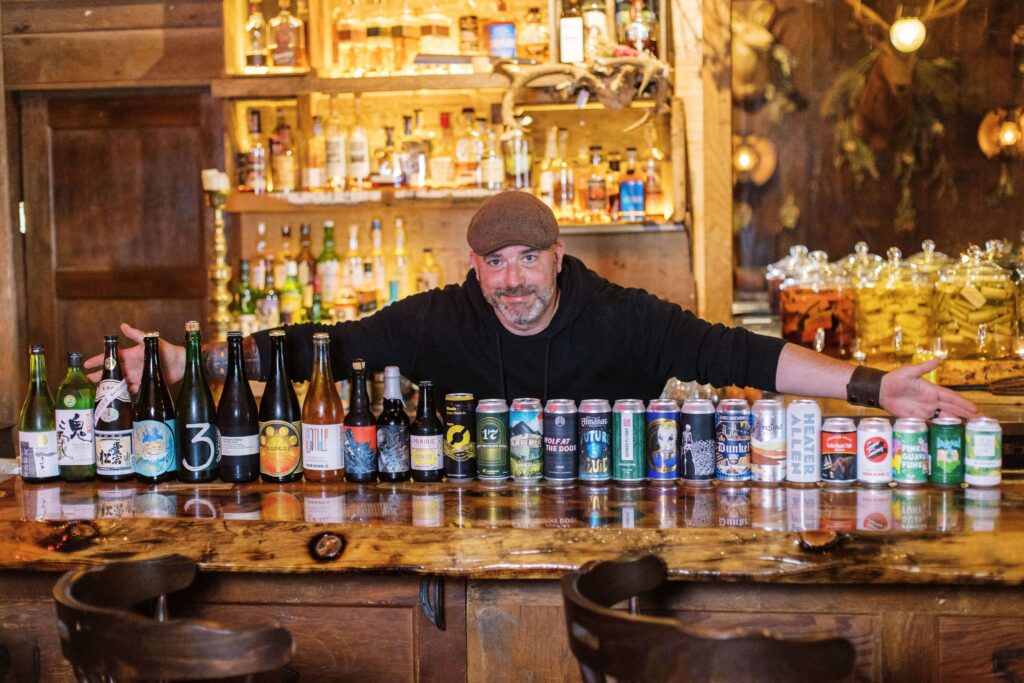
Augat’s sourcing of draft beers includes some local favorites, including a beer from There Does Not Exist, a local San Luis Obispo brewery helmed by Max Montgomery, who worked at Firestone-Walker Brewing for many years.
The “Cans & Bottles” section features “usual suspects” and then there are the unusual suspects – outliers like Anchorage Brewing’s Sent By Liars, Oxbow Brewing Company’s Bramble On, and Fonteinen’s Sherry Lambikken Blend, to name a few.

Augat’s wine list of nearly 60 wines offers more than a few surprise-and-delight moments. While Augat recognizes that Cuyama Buckhorn is in Santa Barbara County, one of the country’s top wine producing regions, he also wants to introduce guests to wines from other regions that are making their best versions of particular grape varietals –think small regions of Italy and France, as well as Austria, Lebanon, and Slovenia. He’s focused on seeking out small producers and showcasing single vineyard wines from across the globe.
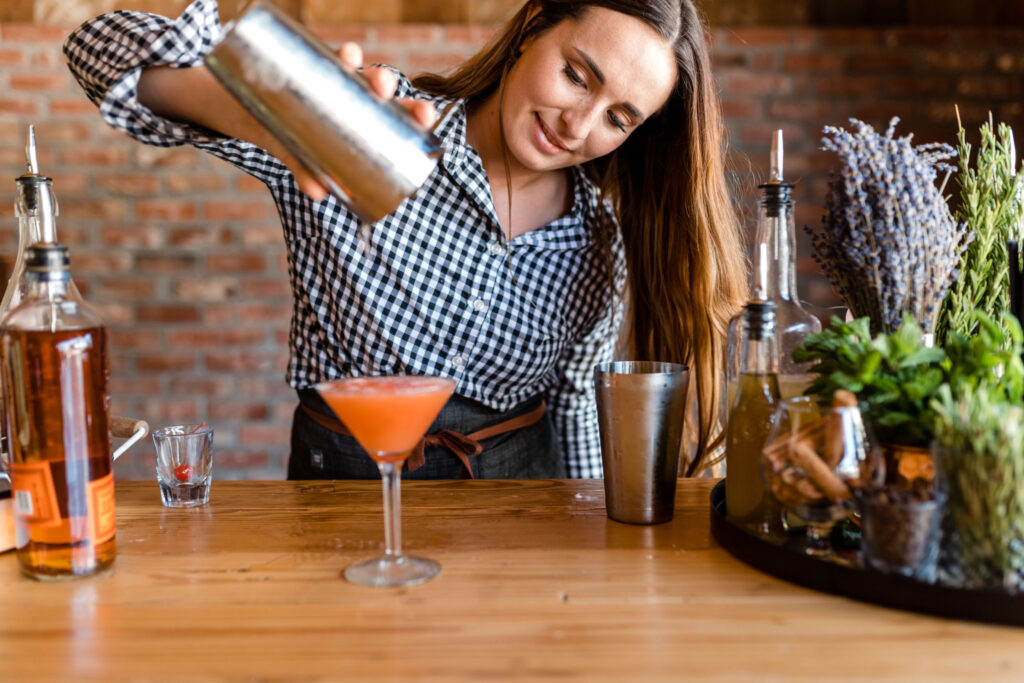
Between Seidenberg and Augat and their team, locals and hotel guests are in good hands where libations are concerned. Not only is everyone guaranteed a stellar beverage experience here, but they may get an education at the same time. Everyone who works behind the bar shares a passion for talking to people and sharing stories, which seems to create an environment where guests find themselves talking and learning, intentionally or unintentionally, about the area and each other.
Cuyama Buckhorn’s Buckhorn Bar Menu
The bar menu is divided into six sections – Farm to Glass, Barrel Aged Cocktails, Macerations, Draft Beer, Cans and Bottles, and Spirits Flights.
FARM TO GLASS is five enticing elixirs, all created to showcase the house-made liqueurs, bitters and seasonal syrups made from local produce and foraged herbs that feature prominently in each glass. Each cocktail is $18.
Done Deal
Aquavit, Amaro, Golden Beet, Lemon
Long December
Reposado, Carrot, Cardamom, Honey
Chelsea Cooler
Botanicals, Celery, Thyme, Red Peppercorn
God’s Country
Rye, 3H Wagyu Beef, Coors Light, Corn
Honeymooner
Grappa, Pineapple, Campari, y, Chartreuse
BARREL AGED COCKTAILS are served from a wine thief from one of four Rod & Hammer whiskey barrels. Each one holds a traditional cocktail such as a Manhattan, a Boulevardier, a White Negroni and a Nouveau Carré and all are made using the Solera aging process so that the flavor of each drink develops over time. Each cocktail is $20.

MACERATIONS are visual delights and feature Tequila, Grappa, Rum and Whiskey – each infused with a combination of flavors such as watermelon, hibiscus and black pepper corn or pineapple, tomatillo and arbol chiles. The watermelon and pineapple have both been smoked with Cypress wood from a felled tree on the property. These can be sipped neat, used in cocktails or served over a large ice cube topped with a splash of Topo Chico. Macerations are $10.
![]()
The FLIGHT MENU is two flights of each spirit–Bourbon, Rye, Peated Whiskey, Brandy/Cognac, Gin, Mezcal and Tequila–with the choice of a Staple Flight or a Premium Flight. Flight mats are provided (staple flights on one side, premium on the other) with information about each spirit along with tasting notes.
Call (661) 766-2825 or visit https://www.cuyamabuckhorn.com/to reserve
E-mail: hello@cuyamabuckhorn.com
Instagram: @cuyamabuckhorn
LOCATION:
4923 Primero Street, New Cuyama, CA 93254
A high desert hideaway, Cuyama Buckhorn sits on Highway 166 between Santa Maria and Bakersfield, CA—an hour away from Santa Maria Airport, two hours from Santa Barbara Airport, two and a half hours from Los Angeles International Airport, two hours from Burbank Airport, and just over an hour from Bakersfield Municipal Airport. The L88 airstrip, a privately-owned, public use airport is 2 blocks from the resort.
Nestled in what is referred to as The Hidden Valley of Enchantment—a fitting nickname for this hidden gem of a region—Cuyama Buckhorn neighbors small farms, ranches, wineries, and natural landmarks including Carrizo Plain National Monument, Los Padres National Forest, and Bitter Creek Wildlife Preserve. The area is a popular destination for motorcyclists and pilots.
ABOUT CUYAMA BUCKHORN
Cuyama Buckhorn is a timeless roadside resort, restaurant, bar, and coffee shop in the heart of California’s high desert within Santa Barbara County, approximately 2 hours north of Los Angeles.
First opened in 1952, Cuyama Buckhorn was remodeled by 2 Los Angeles-based designers who sought to bring the rich history of the resort back to life. The modern motel features 21 renovated Western-chic guest rooms, all with dedicated patio areas. Vintage accents and fixtures throughout the resort nod to the property’s rancher history and original mid-century architecture.
For dining, the property features a farm-to-table restaurant, bar, and coffee shop, along with spaces for hosting private events, weddings, or meetings.




